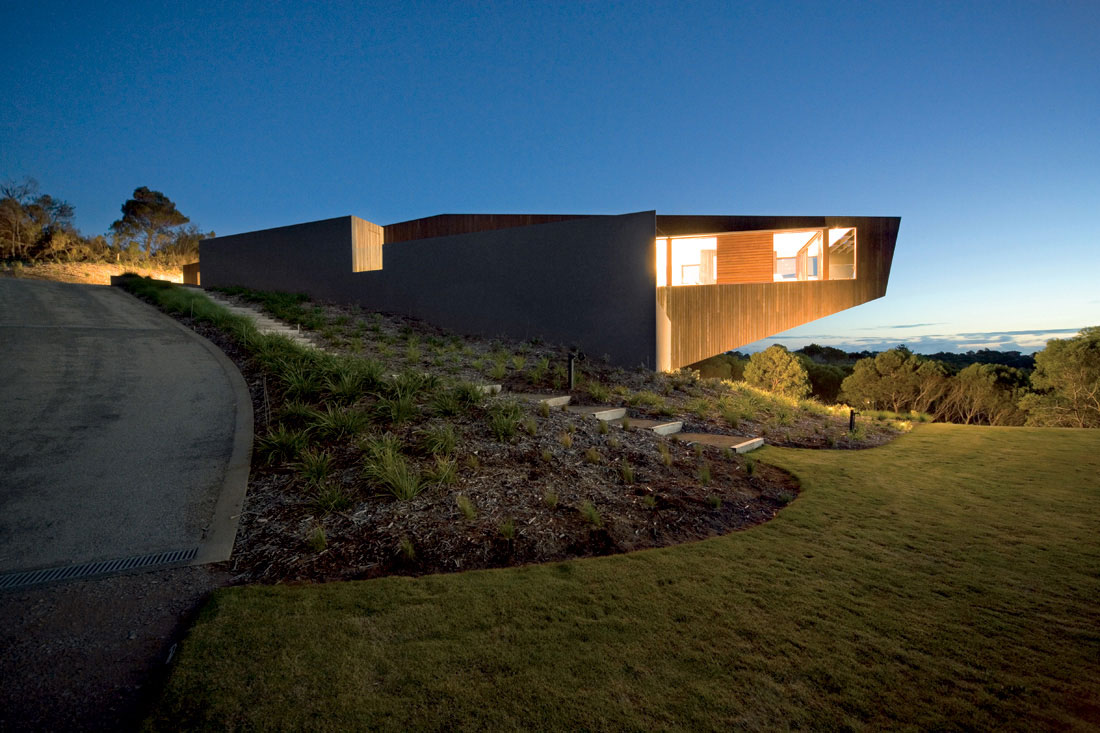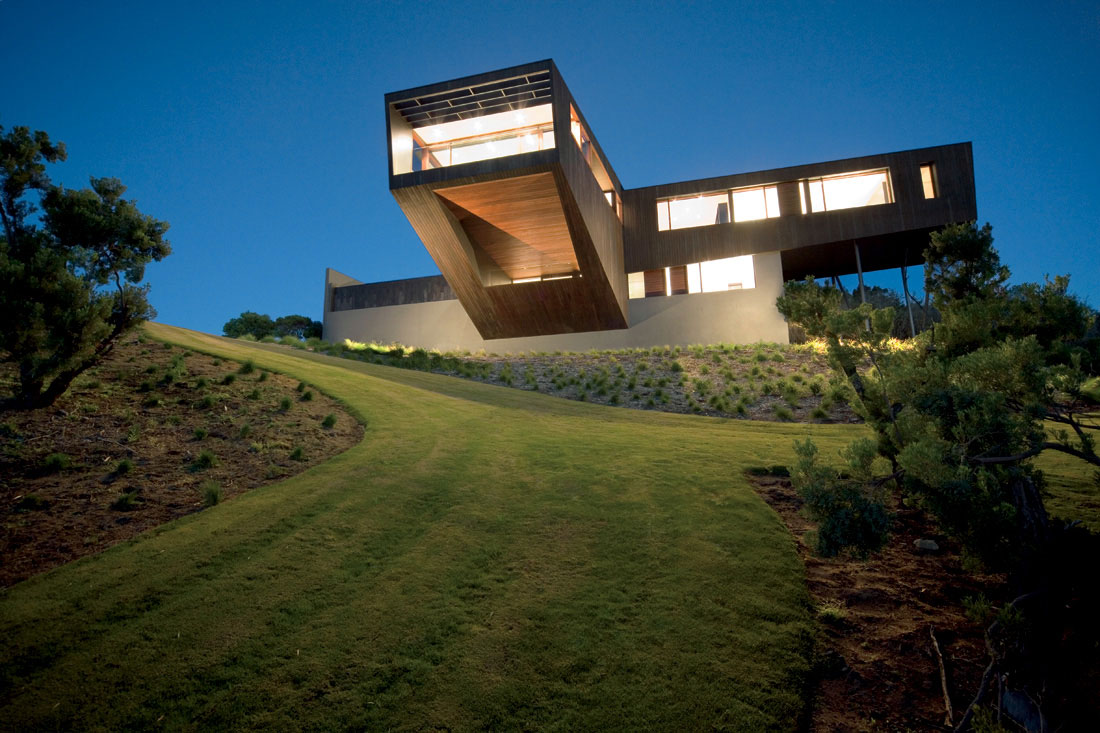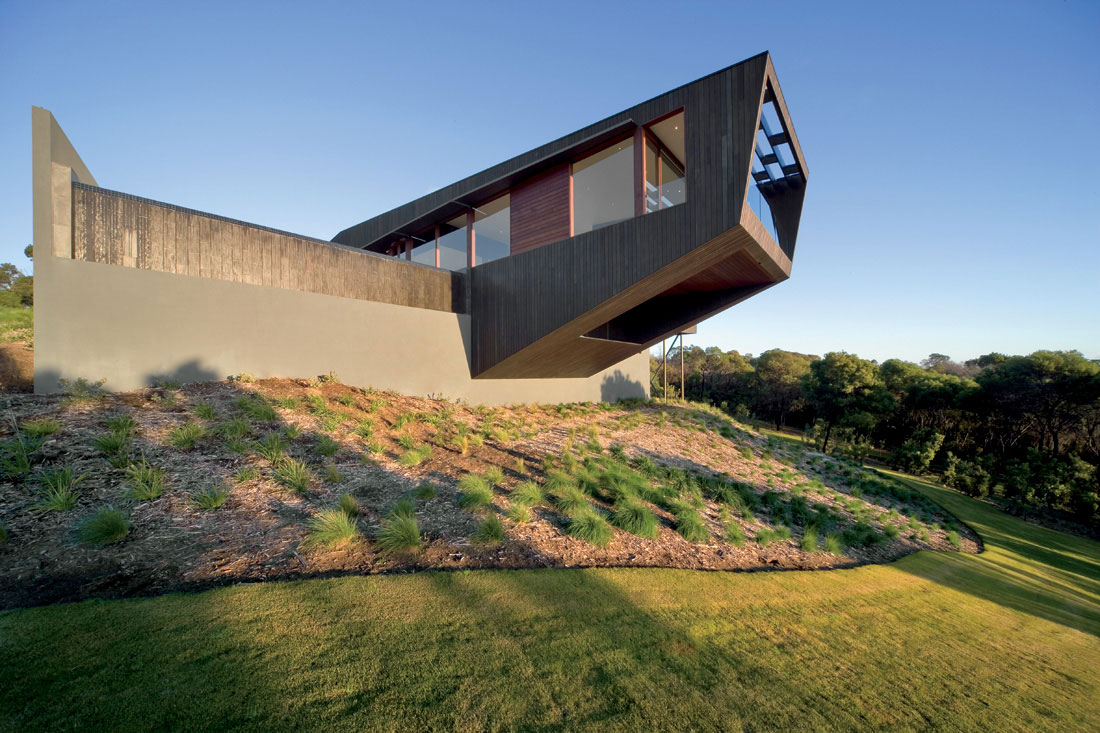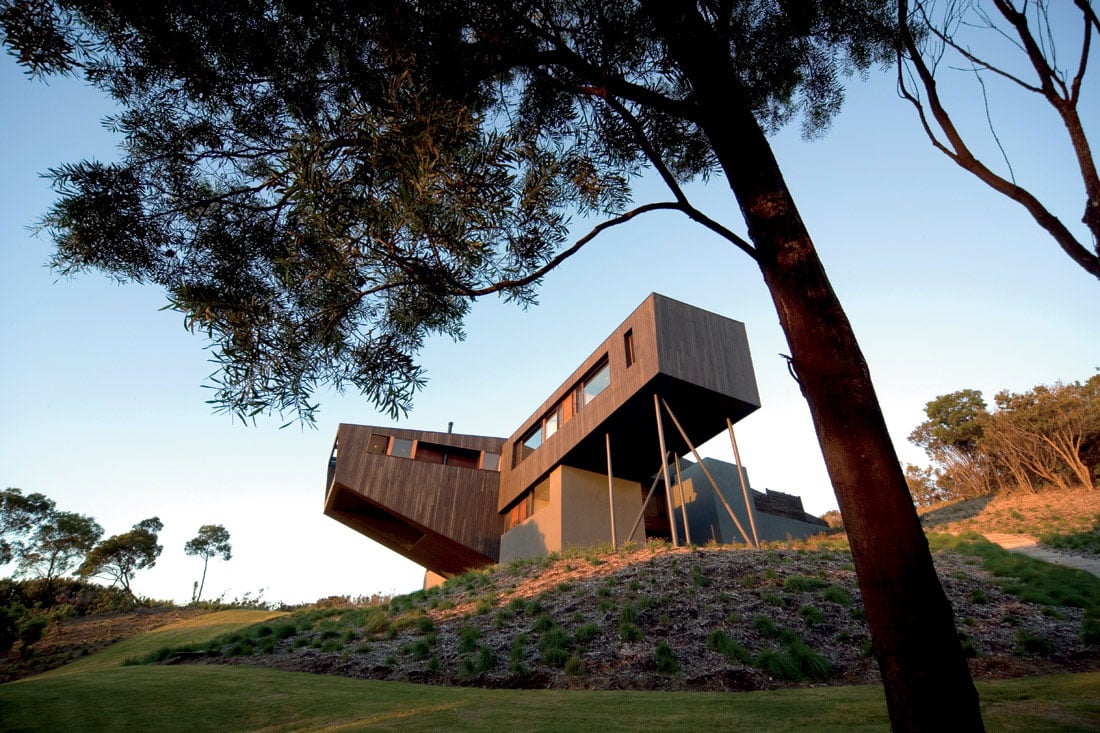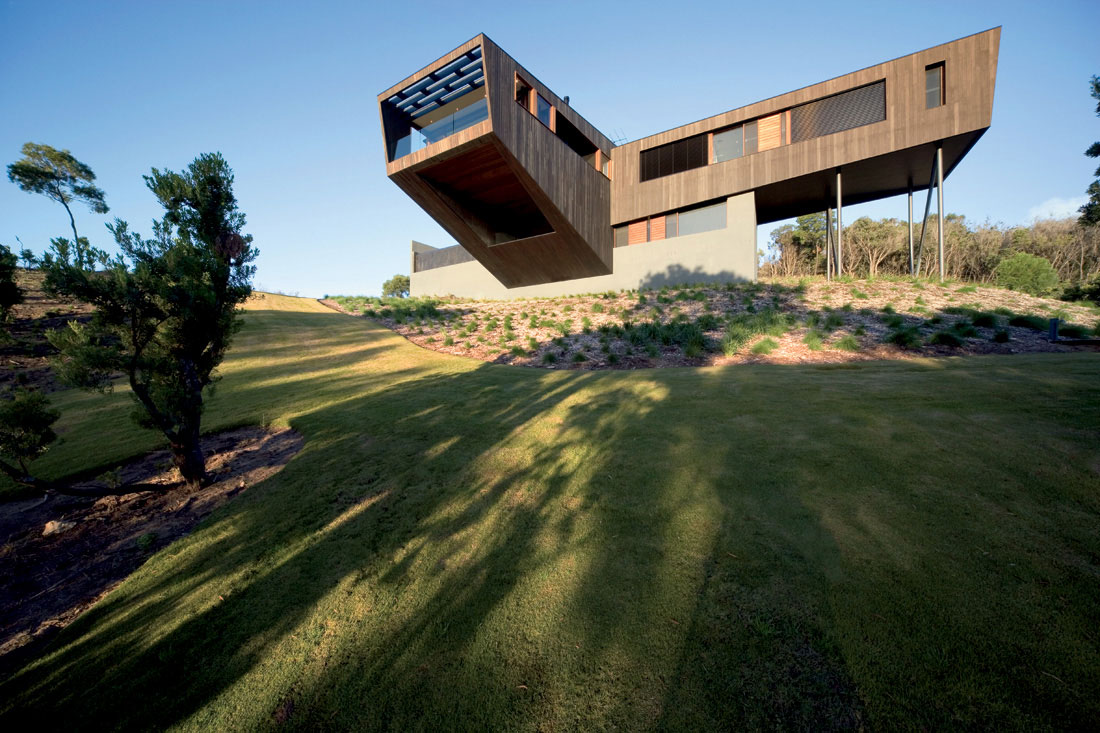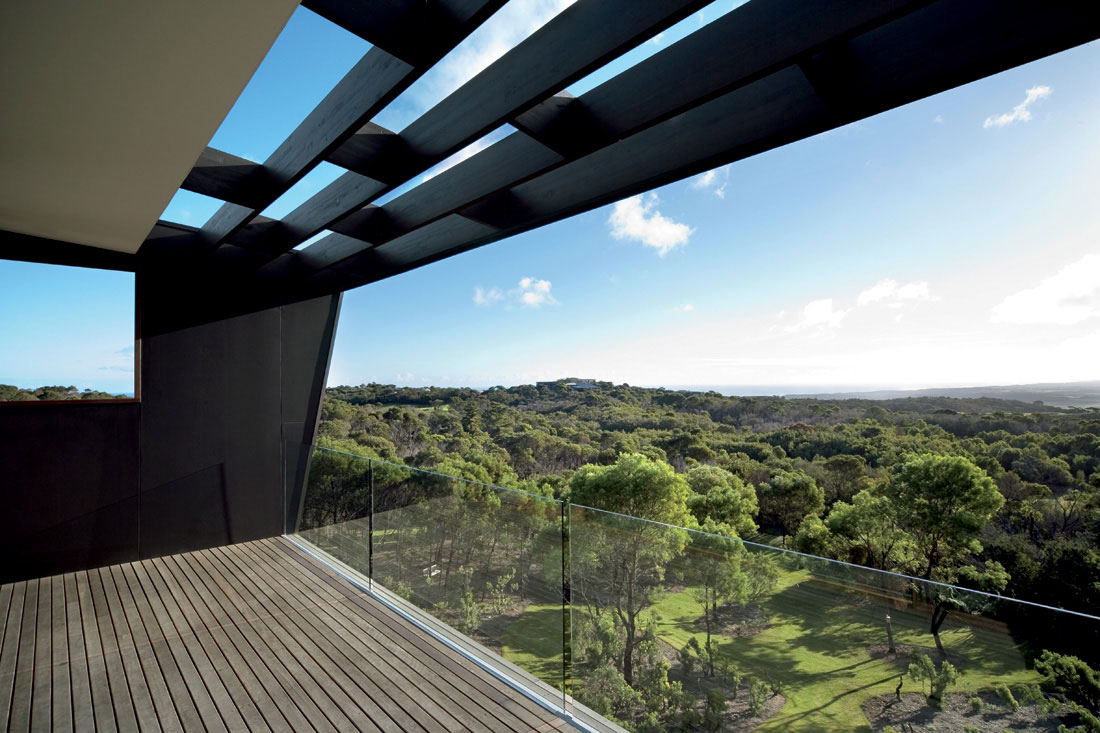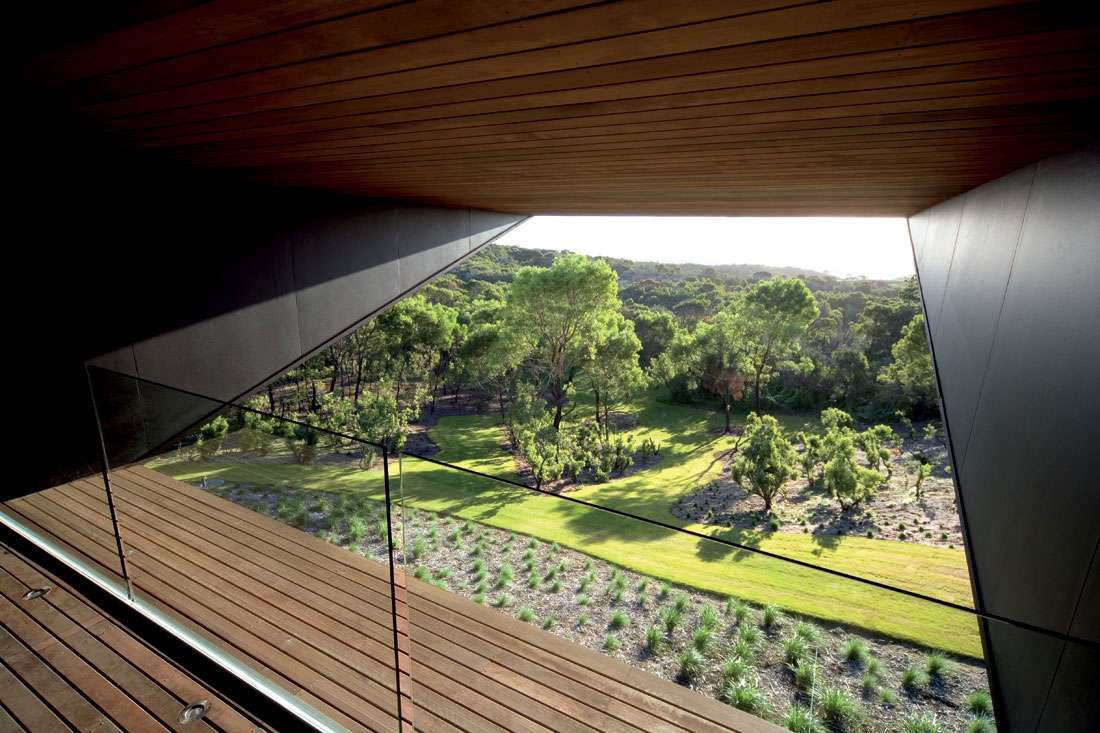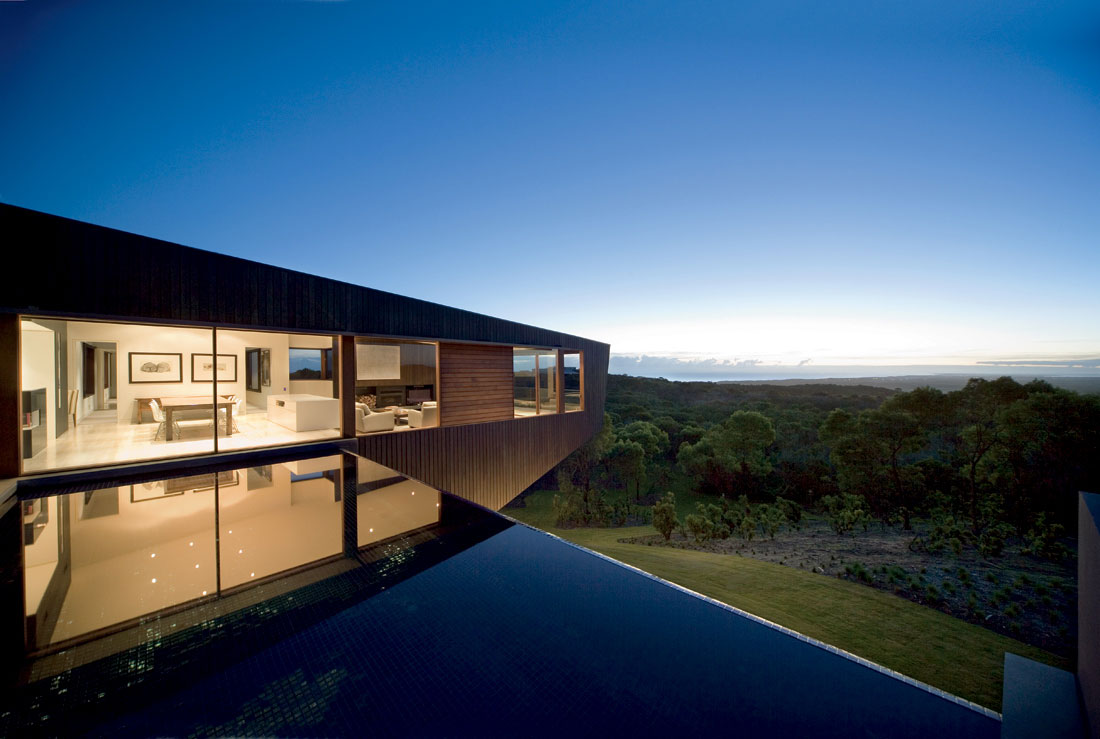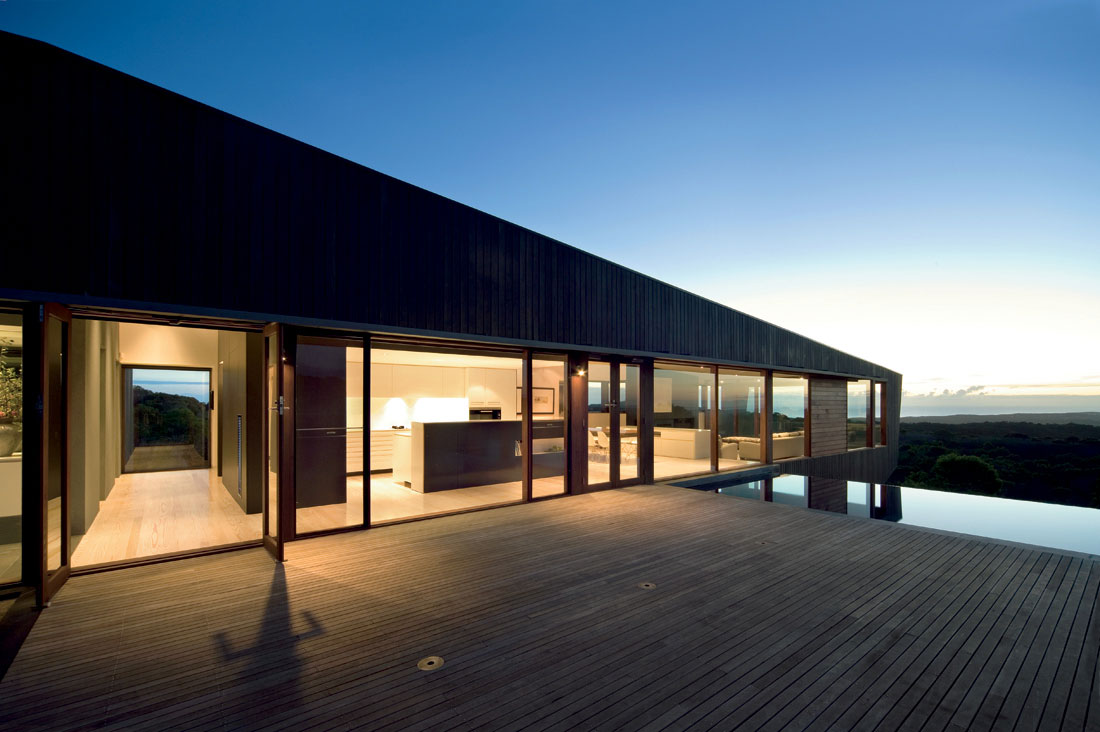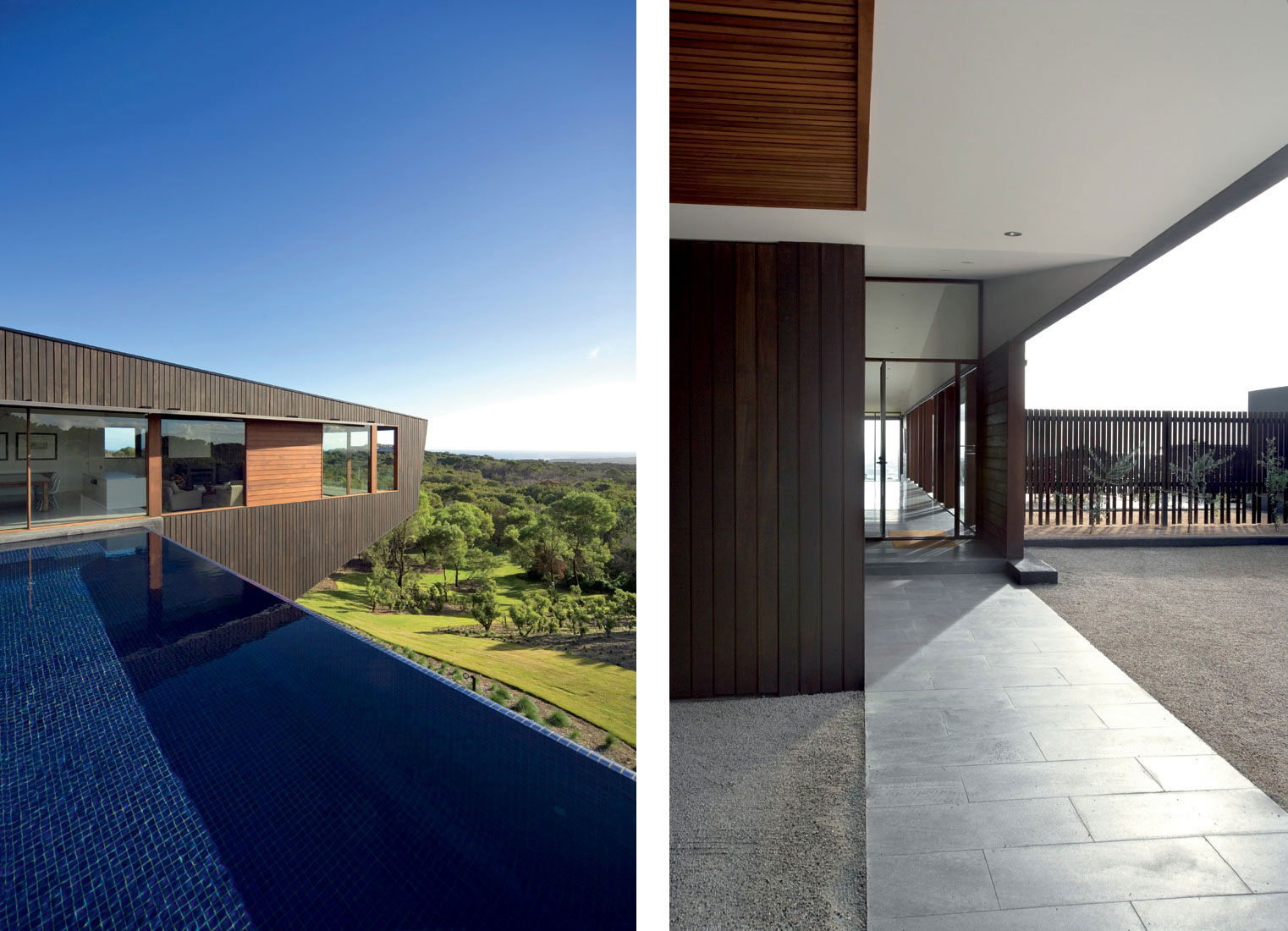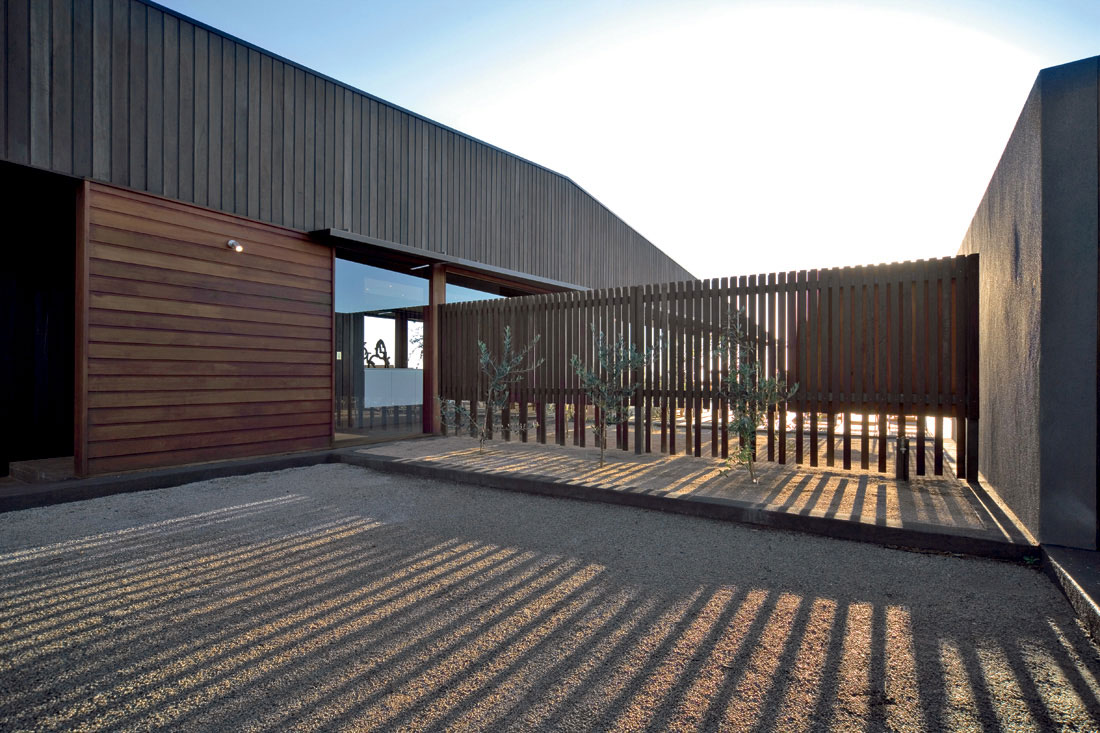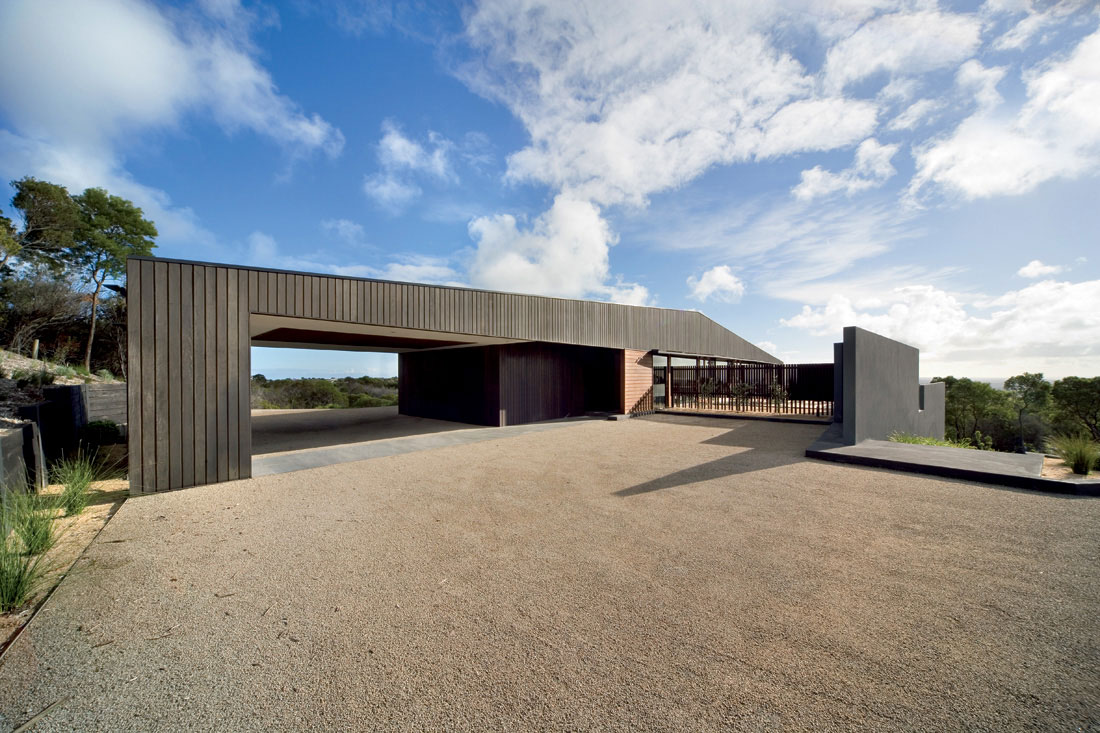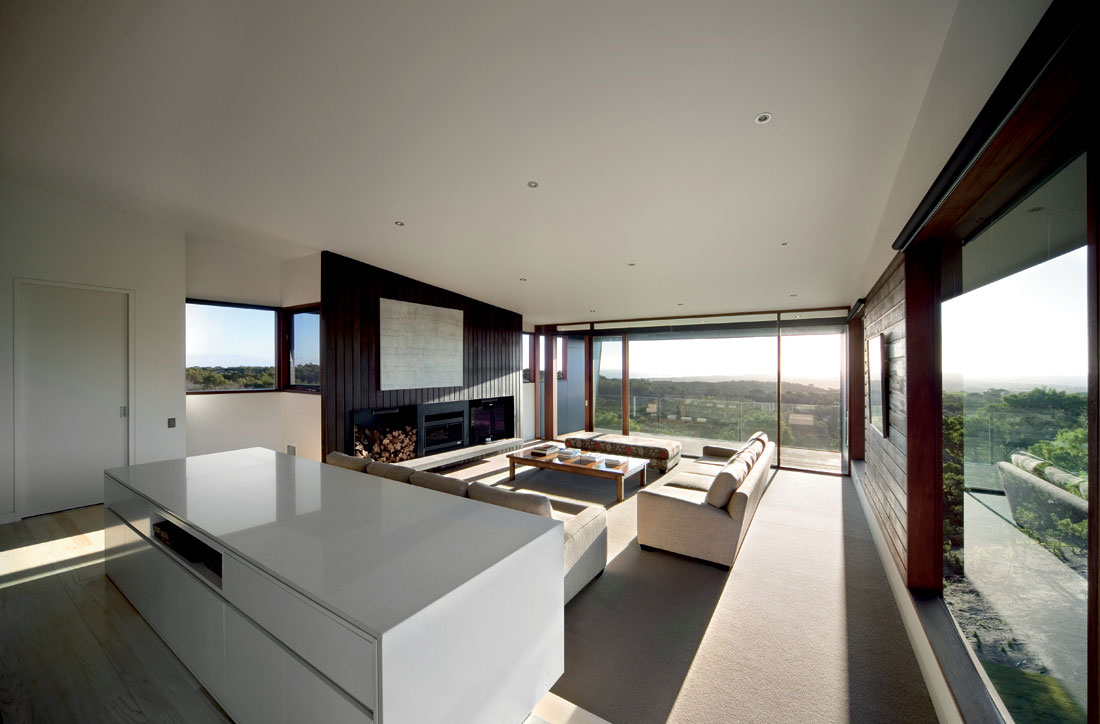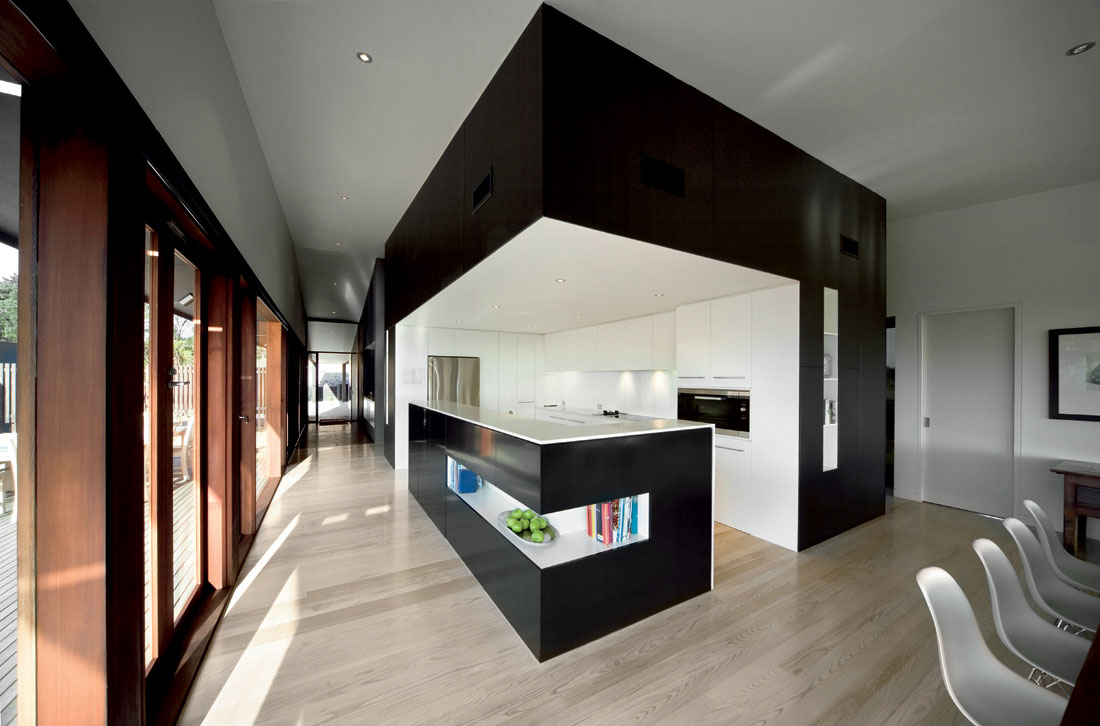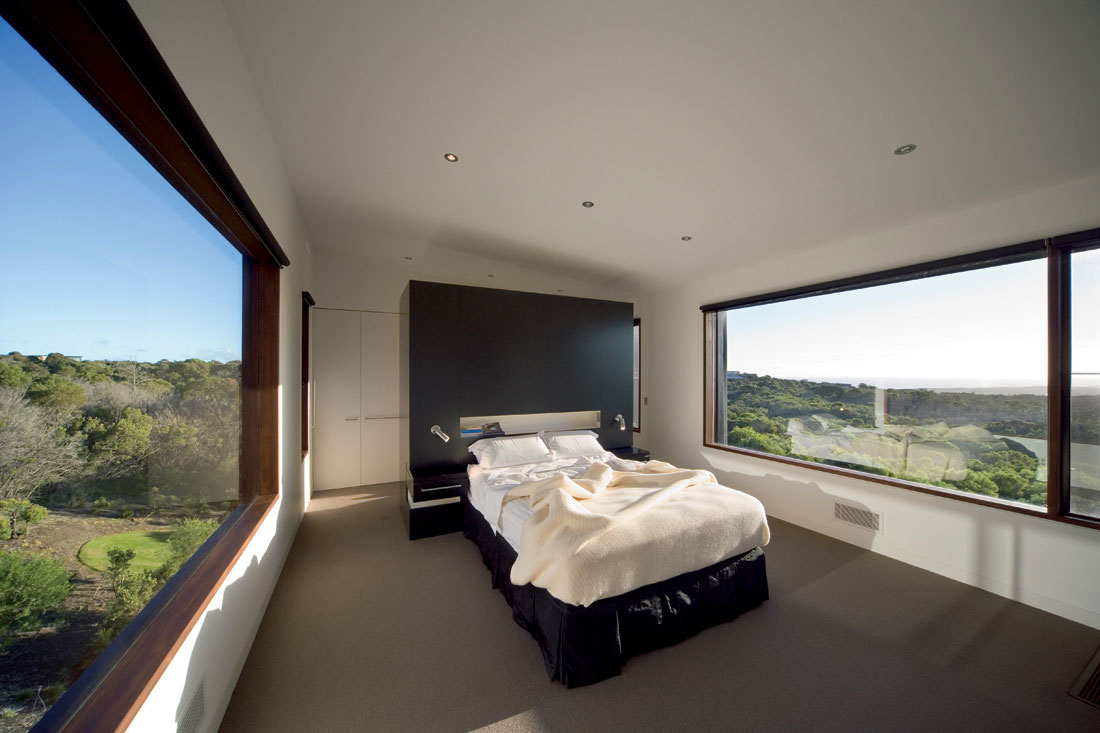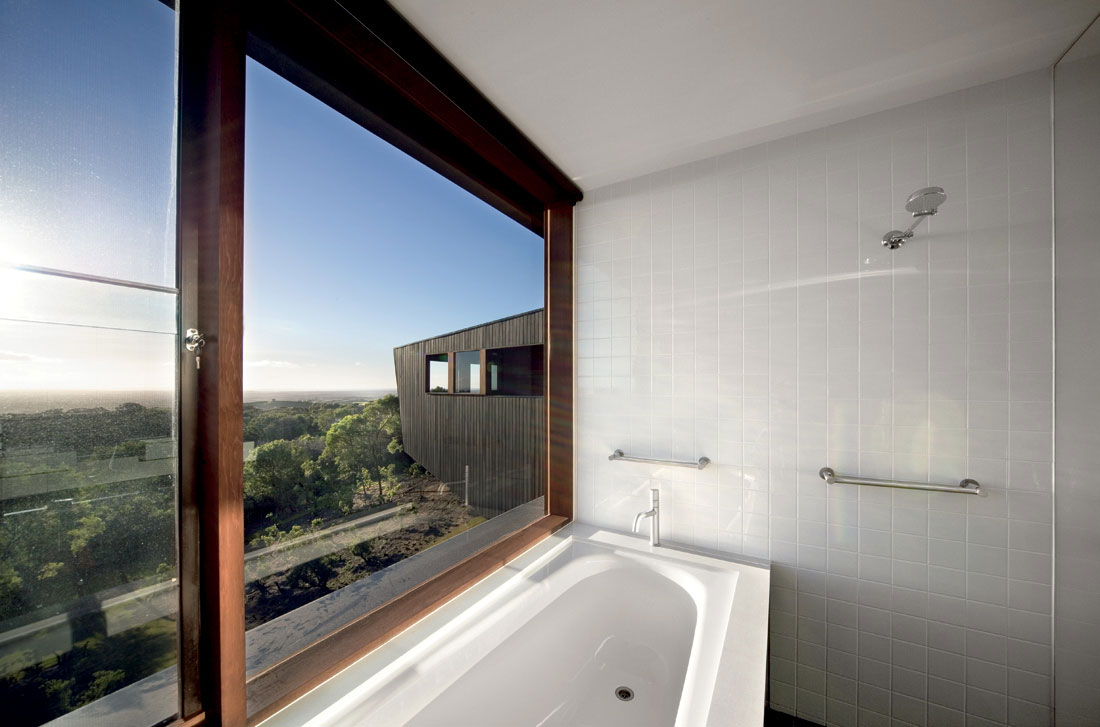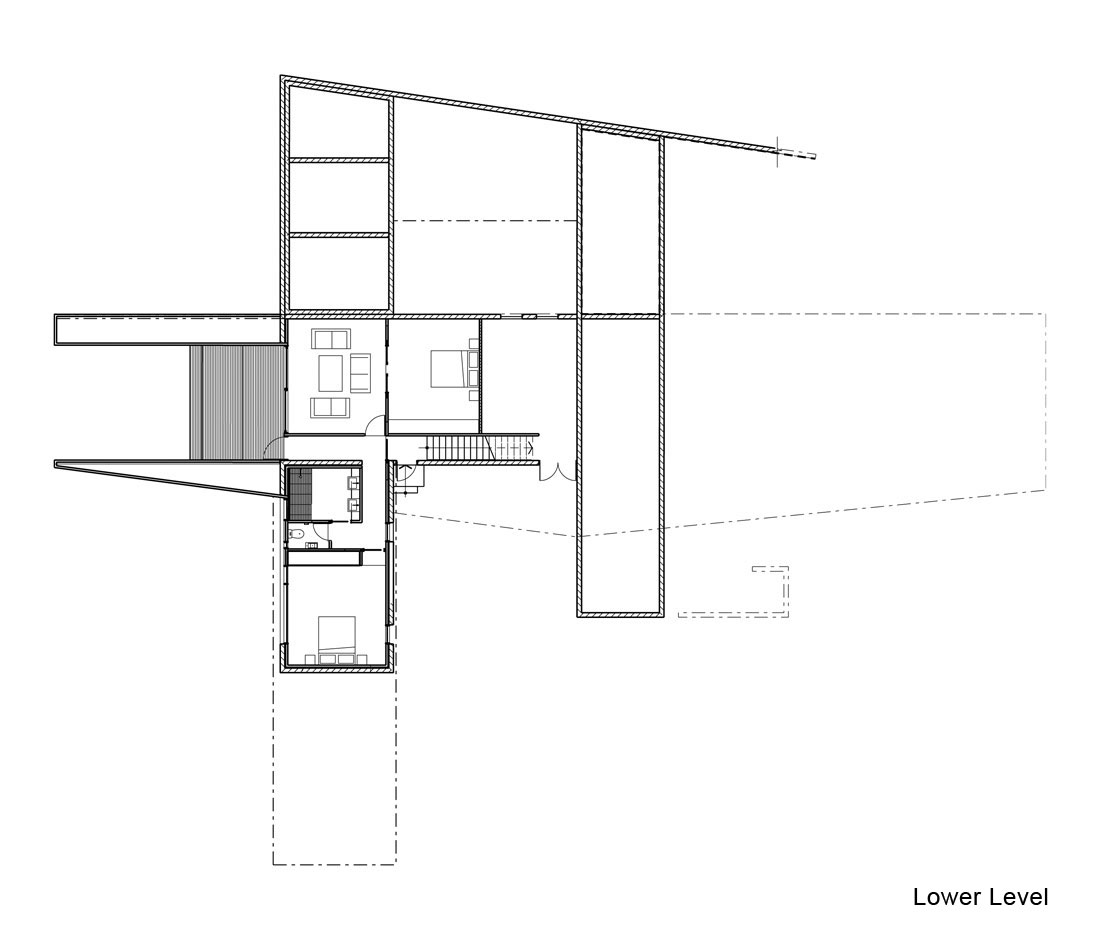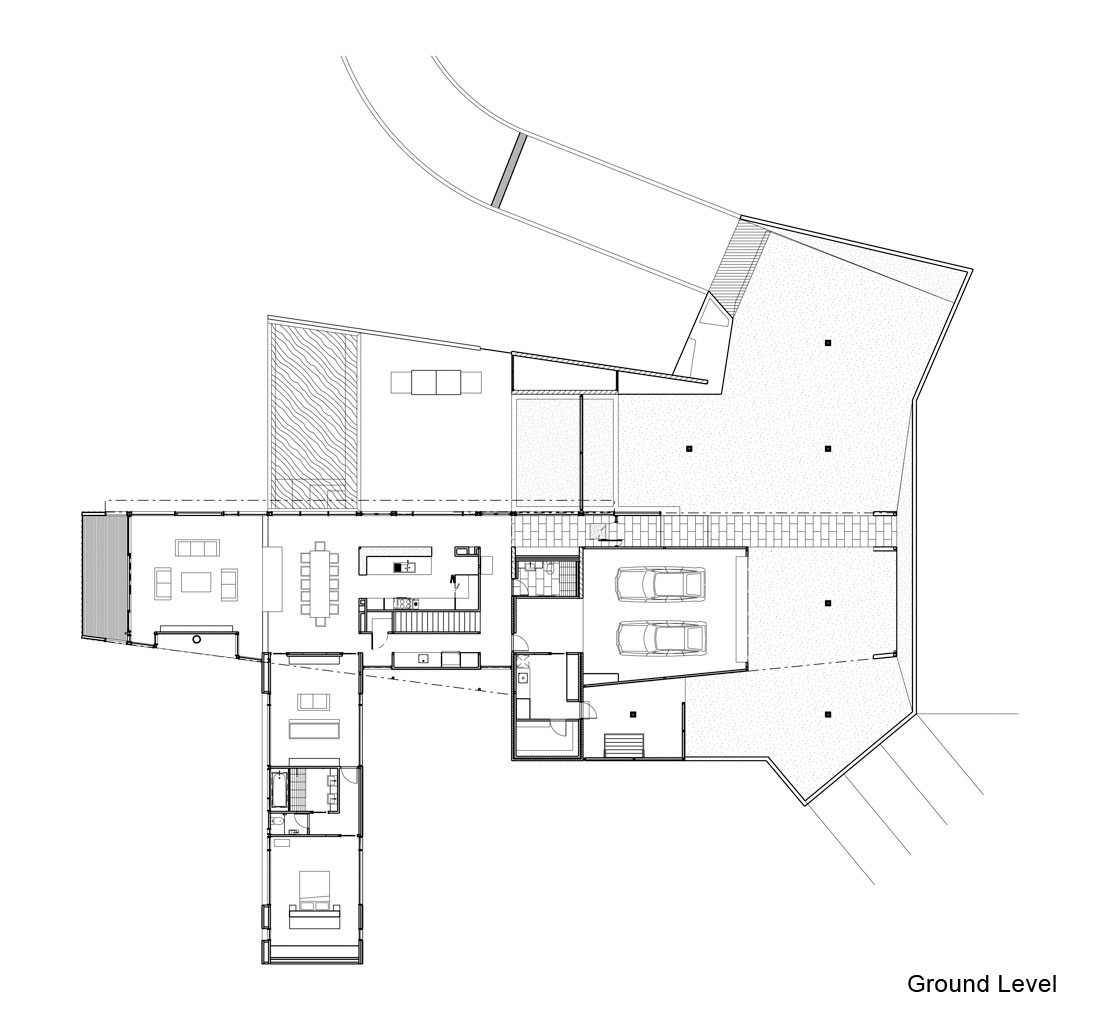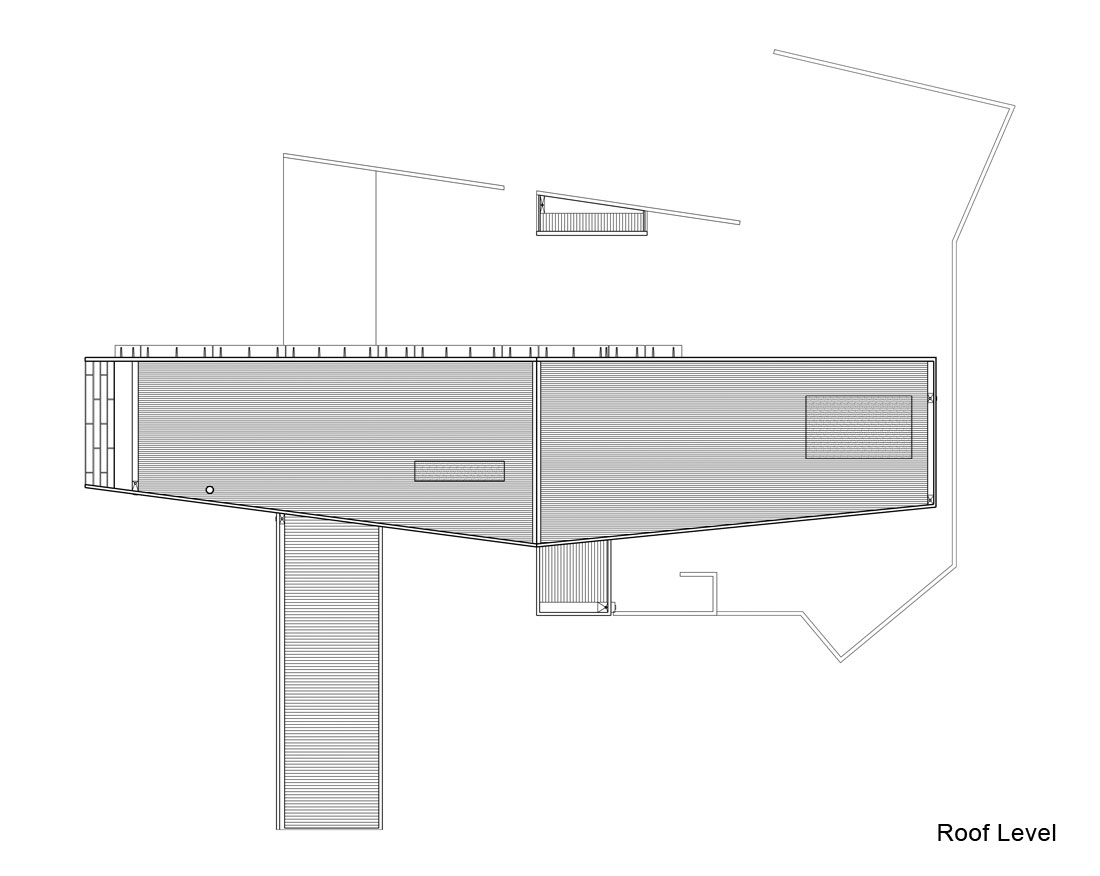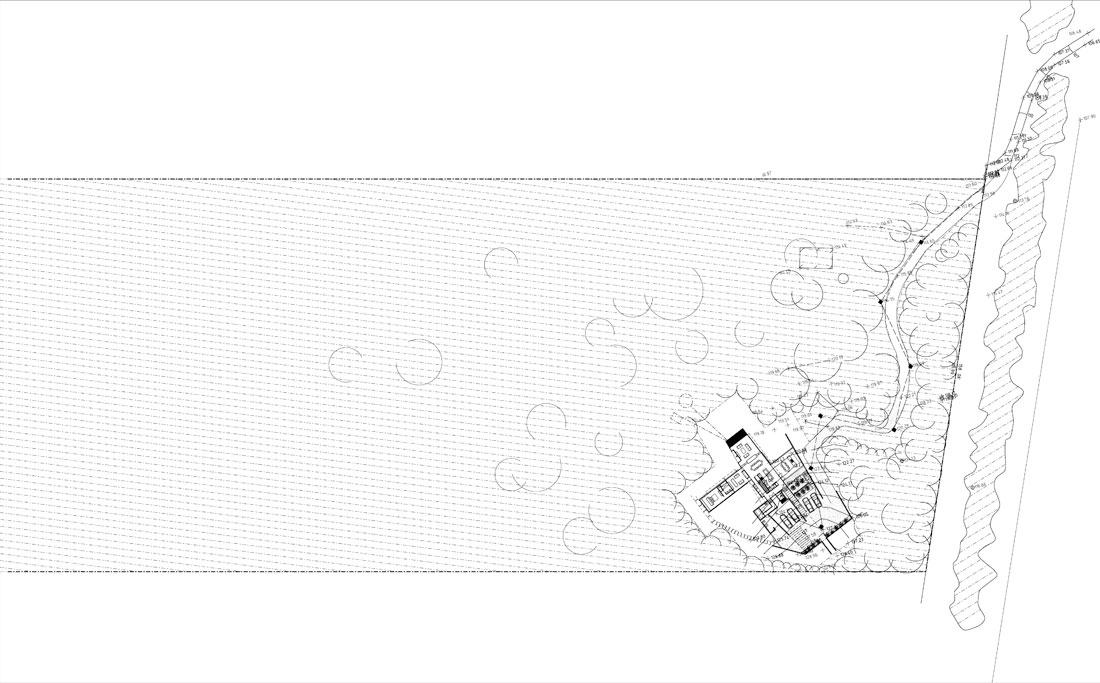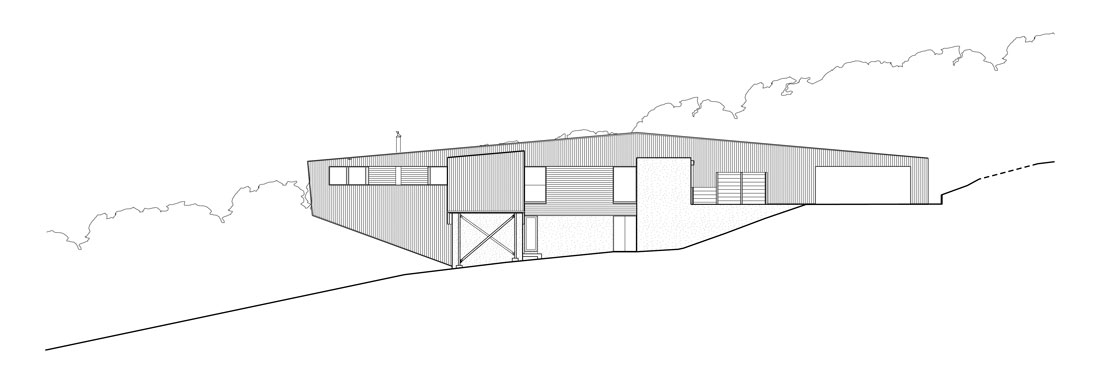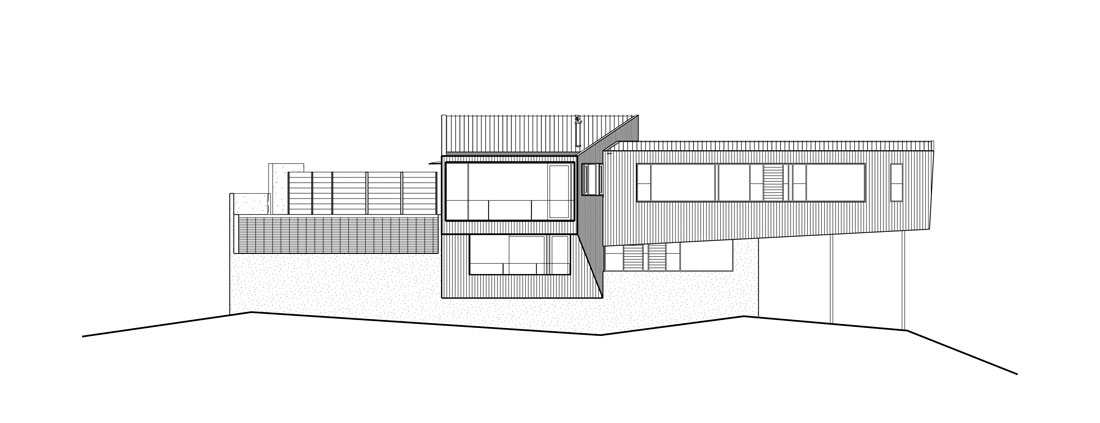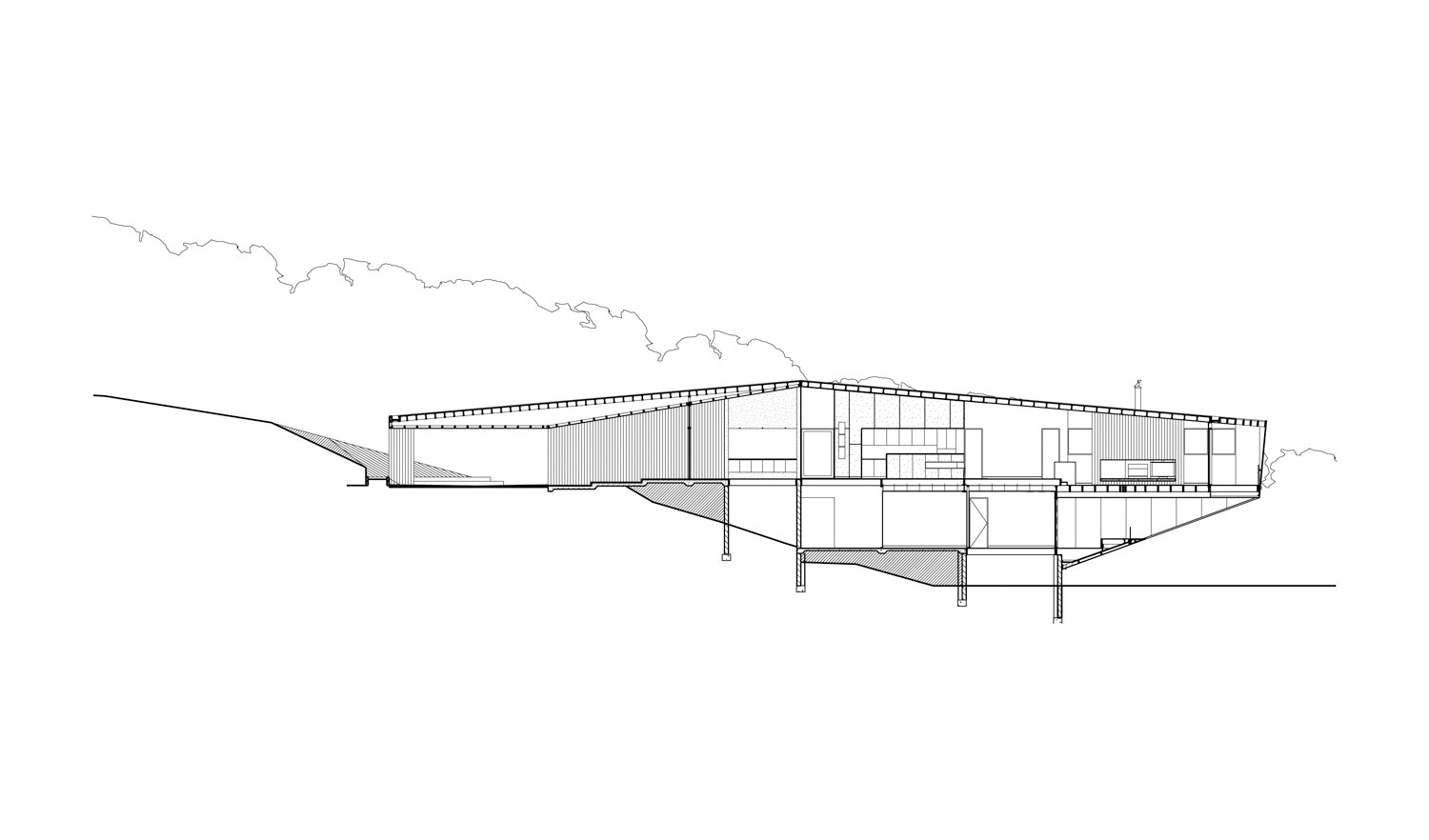Cape Schanck House by Jackson Clements Burrows
Architects: Jackson Clements Burrows
Location: Cape Schanck, Victoria, Australia
Area: 4,300 square-foot
Photo courtesy: John Gollings
Description:
The undulating scene at Cape Schanck is basically a blend of cleared grass rises (privately known as the Cups locale) and sweeping zones of thick Coastal Heath and Ti-tree bush. The site is an assigned rapidly spreading fire zone and preceding the scene being essentially cleared by ahead of schedule European ranchers the zone was possessed by nearby natives. On our first site visit we found the leftovers of an emptied out smoldered log. This educated a beginning stage for a compositional investigation for the insides and outside where the type of the emptied log proposed conceivable outcomes for an engineering arrangement.
The site is situated on a high inland ridge amongst thick beach front ti-tree bush with broad western perspectives. On methodology, the guest is fronted by a broad divider which hides the essential upper level structure. The lower level stretches out from the precarious ground plane as a rendered plinth and structures a base much like the encompassing ridges. A winding garage climbs the precarious rise getting to the upper level behind a screen wall which covers the perspective past. From here the section experience opens to sweeping perspectives over the living territory, deck and pool.
Automatically the house considers the needs of a resigned couple and their more distant family who routinely visit with grandchildren. The essential upper level structure (imagined as an emptied out log) contains the kitchen, eating, living, carport and clothing. An optional upper level structure (considered as a branch reaching out from the log) contains the study, main room and ensuite. These structures are both completed in spotted gum hardwood cladding which is recolored dark. Cedar windows and cladding left in a characteristic completion are sleeved into the dark outside highlighting the contrast between the inside and outside as though piece of a characteristic weathering procedure. The lower level contains visitor settlement and disguises useful plant spaces for mechanical frameworks and pool hardware.
The house is orientated toward the northwest grasping extensive perspectives. To control inactive warming in summer, the western windows are ensured by broad roof and mechanized outside Vental louver blinds consequently dive once the sun goes through the north hub. Broad northern glass is likewise ensured by sunshades which restrain sun based infiltration in summer. Further maintainable outline contemplations incorporate completely mechanized electrical frameworks to decrease pointless force channel, bore water for patio nursery and pool use and water accumulation to tanks for all household use – town water was accessible however the customers concurred that the association was superfluous.
This house draws in with the scene through control of structure, material and shading. The weathered dark vertical cladding profile references the undercroft structure of the Ti-tree and upper level structure stretches out from the slope at ground level ascending to an edge which then plunges toward the west. At separation, the wrenched profile of the structure reacts to the undulating profile of the encompassing ti-tree scour and drenches the building inside of its surroundings.



